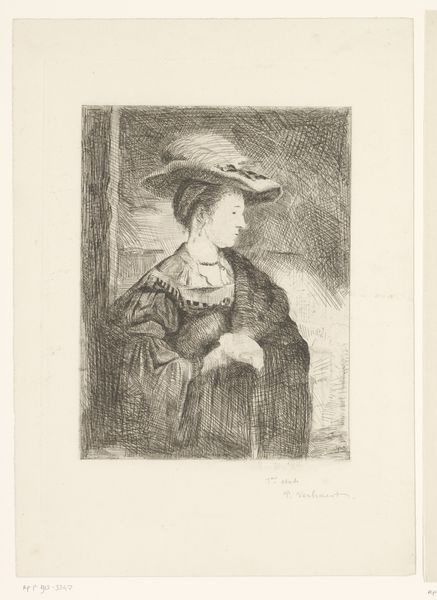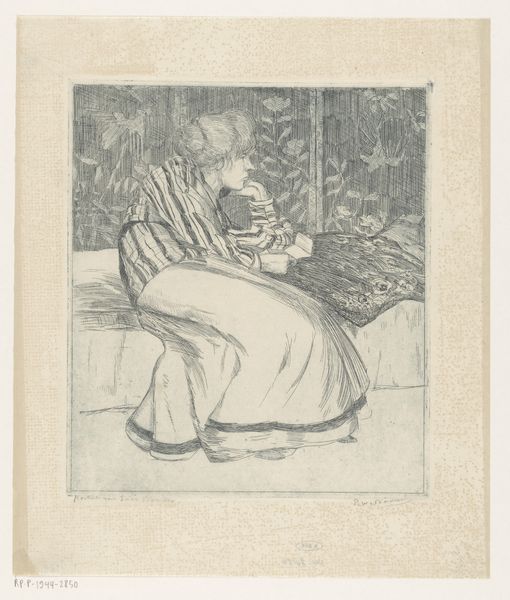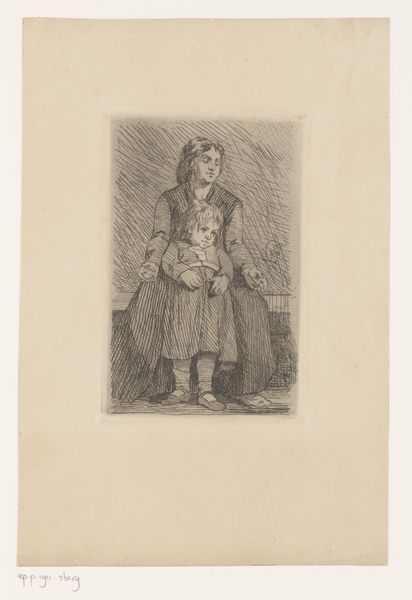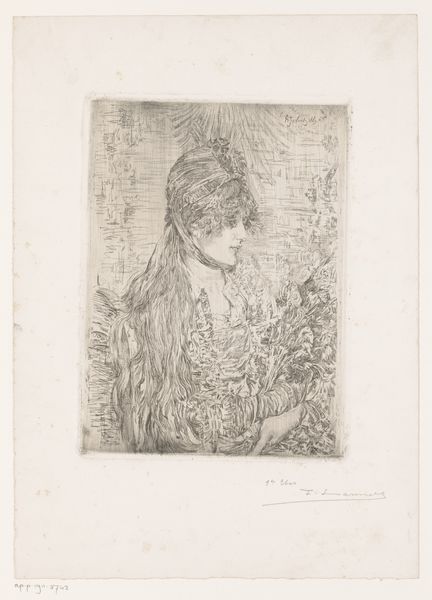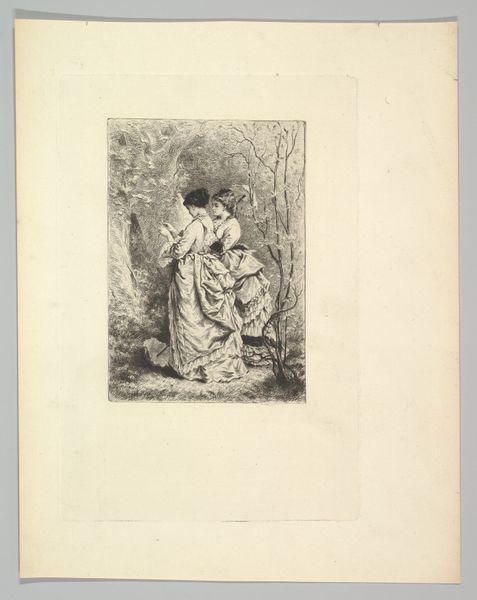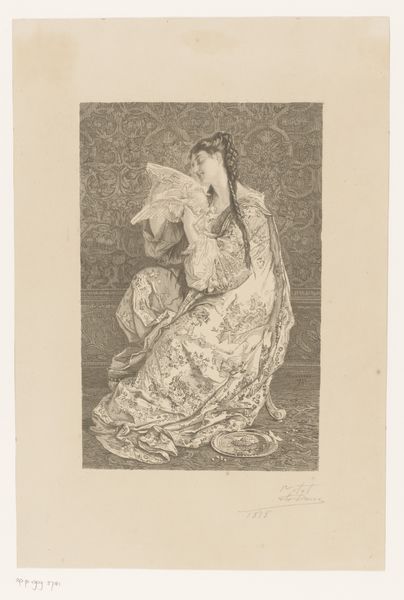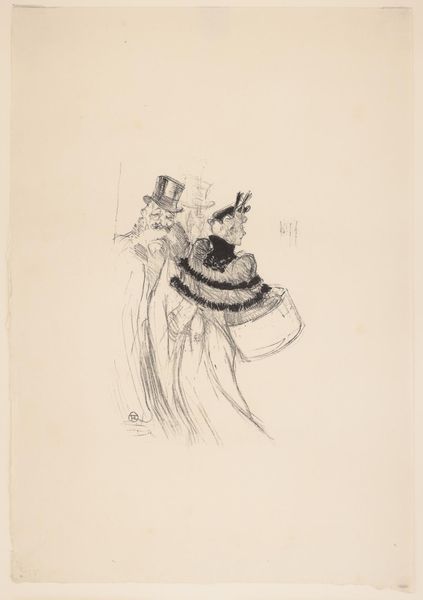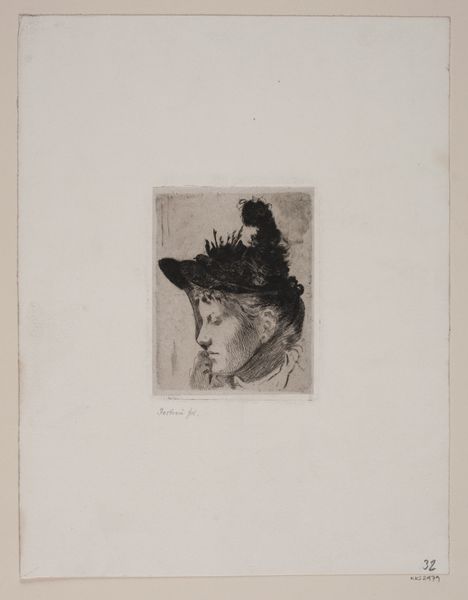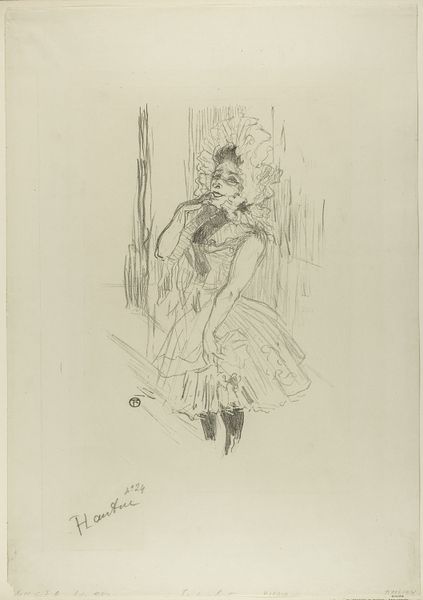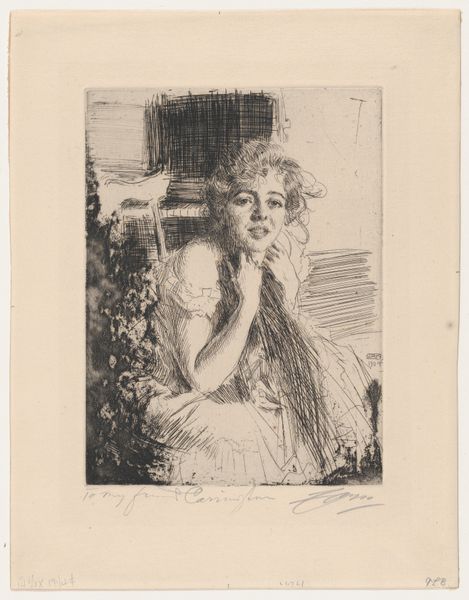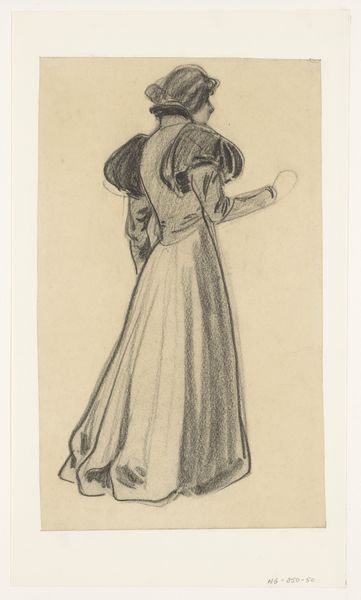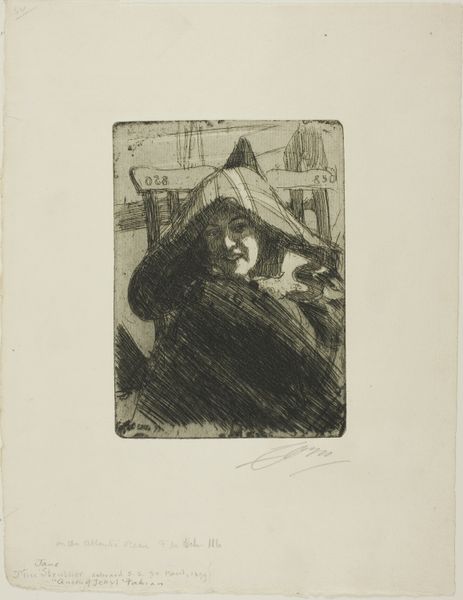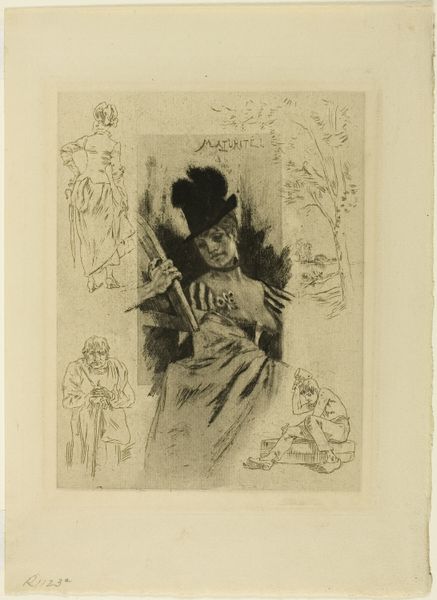
drawing, print, etching, paper, ink
#
portrait
#
drawing
# print
#
etching
#
paper
#
ink
Dimensions: height 215 mm, width 137 mm
Copyright: Rijks Museum: Open Domain
Editor: Here we have Adolphe Albert’s “Twee vrouwen ten halve lijve,” an etching from 1892. The figures are rendered in a way that feels both delicate and strangely imposing, like a faded photograph. What do you see in this piece, from your perspective? Curator: Well, given the work's creation in 1892, it's interesting to consider how such portraits functioned socially. Were these women likely from a particular class? Notice the hats – are they markers of status, conformity, or even subtle rebellion? Editor: That's a good point! The hats are pretty elaborate. I hadn't thought about them as potential symbols. So you're thinking about how this image might have been interpreted within the social circles of the time? Curator: Exactly! The politics of imagery are always at play. Also, consider the act of portrayal itself. Was this commissioned, and if so, by whom? Was it meant for public display, or more private circulation? It raises questions about who gets to be seen and how. Editor: The almost ghostly quality of the etching does give it an air of intimacy, despite the subjects' apparent status. Are etchings, as a medium, part of this context too? Curator: Absolutely. Printmaking democratized image production. By understanding print's historical function as a reproducer of images and disseminator of information, the print has historically circulated in newspapers as an economical art. We see that art becoming less reliant on patronage with social art commentary through new and improved circulation of art with its viewers. Considering that role, it's easier to view it more personally and even politically. Editor: That connection to mass circulation is really interesting, especially given that intimate feel. Curator: Indeed. Looking at art through the lens of its social and historical context can really change the way we perceive it. Editor: I'll definitely keep those questions in mind next time I encounter a portrait like this. Thanks for pointing out all the subtle layers.
Comments
No comments
Be the first to comment and join the conversation on the ultimate creative platform.
